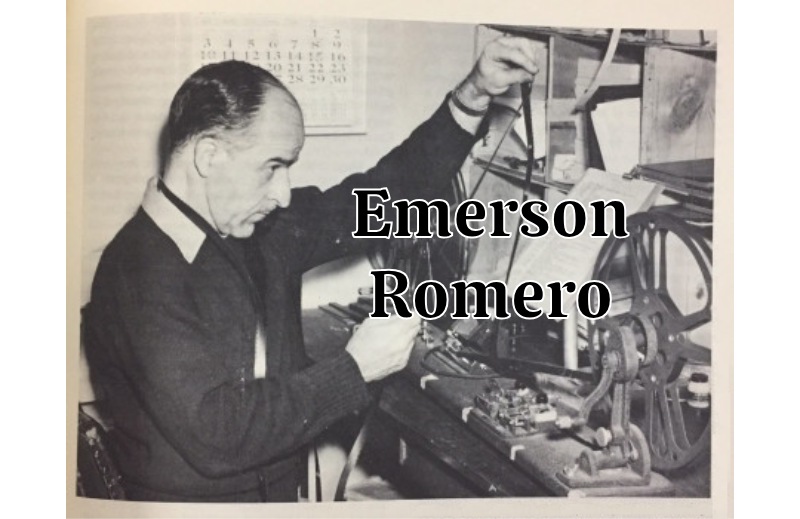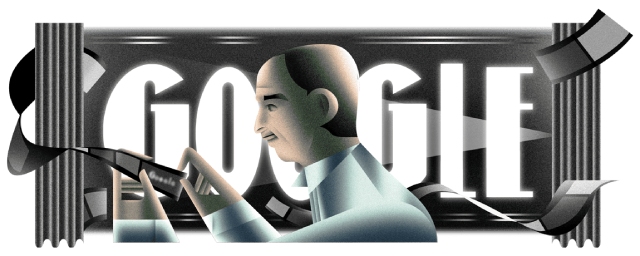Lifestyle
Interesting and Fun Facts about Emerson Romero, a Cuban American Silent Film Actor and Activist

Today’s Hispanic Heritage Month Google Doodle honors Emerson Romero, a Cuban American silent film actor and activist who pioneered some of the first techniques for making films accessible to Deaf people. Today’s Doodle is illustrated by Cuban American guest artist Derek Abella and depicts Romero handling closed caption film. Here are some interesting and fun facts about Emerson Romero.

Here is a look at the life and work of Emerson Romero.
Who was Emerson Romero?
Emerson Irving Romero was a Cuban-American silent film actor who worked under the screen name Tommy Albert.
Romero created the first technology for providing captions for sound films, making them accessible to the deaf and hard of hearing; his efforts influenced the invention of the captioning technique used in films and movies today.
Quick Look
- Birth date: August 19, 1900
- Birthplace: Havana, Cuba
- Died on: October 16, 1972 (aged 72)
- Death place: Boulder, Colorado, United States
- Other names: Tommy Albert
- Education:
- Columbia University
- Lafayette College
- Known for: Early efforts in film captioning
20 Interesting Facts about Emerson Romero
- Emerson Irving Romero was born on August 19, 1900, in Havana, Cuba. He was a first cousin of Cesar Romero, a film and television star. He was diagnosed with whooping cough at the age of six, which caused him to his hearing loss.
- Between 1907 and 1915, he studied at the Wright Oral School in New York City. After finishing the program at that school, he spent a year at Stuyvesant High School. He also attended Interlaken High School in Indiana and Blair Academy in New Jersey, graduating in 1920.
- Emerson Romero spent one year at Columbia University in New York City before transferring to Lafayette College in Easton, Pennsylvania. After two years at Lafayette, Romero was forced to leave due to his father’s financial issues.
- After graduating from Lafayette College, Romero obtained work at the Federal Reserve Bank of New York. His older brother, Dorian, founded the Pan-American Film Corporation in Cuba and urged Romero to pursue a career in acting.
- Romero was featured in a full-length film composed by Dorian named A Yankee in Havana. In addition to acting, he helped shoot films on location, edit them, and write subtitles.
- While in Cuba, Emerson Romero acted in commercially unsuccessful films, but his acting abilities drew the attention of director Richard Harlan, who persuaded him to travel to Hollywood in 1926.
- Romero’s performance attracted the interest of Hollywood film executives, and he soon relocated to California to explore other opportunities on the silver screen.
- Romero featured in over 24 two-reel short comedies between 1926 and 1928, including Beachnuts, The Cat’s Meow, Great Guns, Hen-Pecked in Morocco, Sappy Days, and a remake of Tillie’s Punctured Romance.
- Tommy Albert changed his name at the request of his film distributors, who wanted him to have a “more American-like” name. Romero conducted all of his own makeup and stunt work and collaborated with performers like W. C. Fields.
- Over the next few years, Emerson Romero appeared in more than 20 short films, including popular ones such as Great Guns, Sappy Days, and The Cat’s Meow. In 1927, sound films, popularly known as “talkies,” became extremely popular. Studios stopped casting performers with hearing impairments and eliminated title cards. They also removed subtitles from completed films, making it impossible for persons with hearing problems to enjoy the movie.
- The films he appeared in are now thought to be lost. When sound films (“talkies”) were launched in 1927, deaf individuals were no longer considered prospective actors; studios no longer provided intertitles, and deaf people were shut out of enjoying movies. In the fall of 1928, Romero returned to New York and his former employer, the Federal Reserve Bank.
- Emerson Romero became active in the deaf community in New York City, co-founding the Theatre Guild of the Deaf with friends John Funk and Sam Block in 1934. The theatre company lasted twenty years, and Romero appeared in and directed numerous plays throughout the years.
- In 1938 and 1939, he was the editor of Digest of the Deaf. He began a new career as a sheet-metal and template maker for Republic Aviation, where he contributed to the production of the Republic P-47 Thunderbolt fighter aircraft used during World War II.
- Romero, who is always seeking methods to help the deaf community, purchased numerous films and experimented with captioning them. In 1947, Romero created the first movie captioning by splicing film strips and adding captioned pictures between picture frames.
- He continues to promote the Deaf community by fighting for subtitles in films. In 1947, Romero created the first captions for a “talkie” by splitting film strips and pasting visuals with captions between frames. This breakthrough methodology influenced those who developed advanced captioning methods.
- In 1959, Emerson Romero created and sold the Vibralarm, a vibrating alarm clock for the deaf and hard of hearing; he also offered an entire product line of deaf-friendly devices such as doorbells, smoke detectors, and baby alarms.
- In 1965, Emerson Romero retired from his job at Republic Aviation.
- In 1970, the New York City Civic Association of the Deaf presented Romero with its annual civic achievement award “in recognition of his tireless efforts and dedication to the deaf”.
- Romero and his wife moved to Boulder, Colorado in the spring of 1972, where he died on October 16, 1972.
- Romero left a significant legacy by appearing in films, directing plays, and advocating for greater accessibility to movies. As Hispanic Heritage Month begins, we recognize Romero for his numerous achievements.
-

 Business3 weeks ago
Business3 weeks agoPrakash and Kamal Hinduja: Driving Social and Environmental Change
-
Education4 weeks ago
Fred DuVal: University Leadership as a Critical Resource for Climate Change Research and Life-Saving Solutions
-

 Health3 weeks ago
Health3 weeks agoThe Hinduja Brothers Commitment to Global Health: Empowering Communities Across Borders
-

 Cryptocurrency3 weeks ago
Cryptocurrency3 weeks agoDesigned For The Masses: How Akasha (AK1111) Is Unlocking Crypto For The Next Billion Users
-

 Cryptocurrency4 weeks ago
Cryptocurrency4 weeks agoNexaglobal & Future World Token (FWT): Could This Be the Next Big Crypto Investment of 2025?
-

 Sports4 weeks ago
Sports4 weeks agoWomen’s NCAA Tournament 2025 Sweet 16: Full Schedule, Fixtures, Teams, Bracket, and How to Watch March Madness Basketball Match Live
-

 Startup2 weeks ago
Startup2 weeks agoCost-Saving Strategies Every Small Business Owner Should Know to Boost Efficiency
-

 Startup3 weeks ago
Startup3 weeks agoMatthew Denegre on the Art of Deal Sourcing: Finding the Right Investment Opportunities























